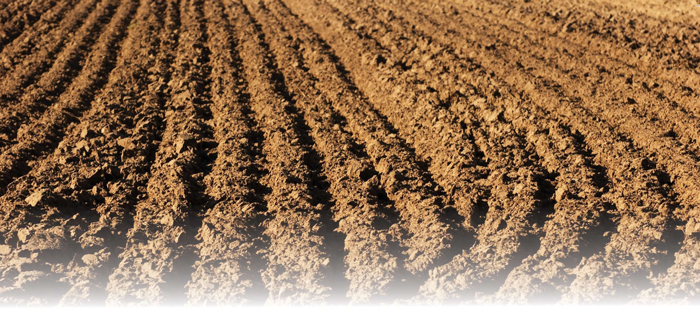November 2018
The use of herbicides for weed control has become common practice in modern agriculture. The use of such chemicals can, however, extend beyond the intended target species and influence non-target organisms.
Fungi and bacteria are mostly known for, or associated with, the diseases that they cause. Many of these diseases and their associated pathogens are soil-borne, and are accordingly subject to the potential effects that pesticides such as herbicides might have.
Fungi – of the pathogenic kind…
Disease development is favoured by conditions that place the host under stress. Several studies were initiated internationally to establish the potential effect that disease-herbicide interactions involving soil-borne pathogens could have on certain crops.
A University of Missouri (Columbia) research group1 investigated the impact of, amongst others, 2,4-DB, alachlor and glyphosate on early stage development of charcoal rot of soybean. They observed that the actual stress induced with 2,4-DB in field studies, significantly increased root colonisation by Macrophomina phaseolina (causal organism of charcoal rot) on soybean roots.
Alachlor, however, significantly reduced colonisation, whilst stresses induced by glyphosate (applied at sub-lethal rates) had no effect on colonisation of this pathogen. As the colonisation observed was more due to the root injury caused as a result of herbicide application than to herbicide stress per se, they concluded that crop susceptibility towards plant pathogens can potentially be altered with the application of certain herbicides.
Kremer and Means2, concluded that glyphosate application on glyphosate resistant soybean may enhance Fusarium root colonisation and potential disease through not only stimulating growth of the fungal pathogen, but also suppressing bacterial antagonists, whilst another study reported that glyphosate can promote Fusarium head blight of wheat and barley3.
No significant effect of glyphosate on either Fusarium spp abundance or Fusarium-related disease levels was reported by other studies4,5. The general trend of contradictory findings accordingly continue.
During 2008 Powell and Swanton6 published an article titled, ‘A critique of studies evaluating glyphosate effects on diseases associated with Fusarium spp.’ in the internationally accredited journal, Weed Research. Although they focussed on Fusarium related diseases, their comments are applicable to all disease related research. Their findings suggest that despite glasshouse studies demonstrating the stimulatory effect of glyphosate on Fusarium spp., few field studies have demonstrated a link between glyphosate and crop diseases associated with this fungal group.
They state that there is clearly disagreement internationally when it comes to glyphosate use and enhanced plant disease associated with tolerant fungal species. The authors attribute the lack of correlation between glasshouse findings and field studies to the possibility that glyphosate stimulation of fungal diseases is largely a glasshouse phenomenon, where environmental conditions can be easily controlled to promote infection and advancement of disease.
Powell and Swanton state that differences among field studies in overall levels of variance and replication could explain why some studies observe significant treatment effects and others not. The authors, however, concede that they cannot disprove the linkage between pathogenic fungi such as Fusarium spp. and glyphosate use, but emphasise that initial inoculum level, weed abundance and community composition, fertility, agronomical practices, climate and soil chemical and physical properties are all important factors that interact with glyphosate and need to be considered when designing field experiments.
They concluded that taken at face value, there is little evidence from experimental field trials to support a causative link between glyphosate and crop diseases associated with Fusarium spp. Sanyal and Shrestha7 similarly discussed the lack of consistent responses observed with studies investigating the effect of glyphosate in the severity of soybean sudden death syndrome caused by Fusarium solani.
Herbicides with antifungal properties
It is speculated internationally that the activity of herbicides can potentially extend beyond their target organisms and inhibit spore germination or mycelial growth, alter the phytoalexin levels, or interfere with other physiological processes in plants.
An Australian research group initiated a short study on the effect of glyphosate on Sclerotium rolfsii (a common soil-borne plant pathogen known to persist in crop residues) after banana growers reported little mycelial growth and fewer sclerotia on rotting residues sprayed with glyphosate8.
Their laboratory-based research findings concluded that glyphosate sprays might inhibit the growth of S. rolfsii affecting banana material in the field. Other herbicides such as diuron, atrazine, simazine and metribuzin were found to have inhibitory effects on Sclerotinia sclerotiorum (causal organism of Sclerotinia stalk rot in soybean) at a certain concentration tested in petri dish studies9. Acetochlor treatment was shown to decrease vascular wilt due to Fusarium oxysporum in melon10.
The pre-plant application of glyphosate reportedly reduced the incidence of red crown rot in soybean11, whilst reduced conidial germination, mycelial growth and sporulation were found for F. solani12 (causal pathogen of sudden death syndrome). For every study that points to a potential inhibitory effect of a fungal pathogen, one would, however, almost always find a different article that was unable to observe any effect at all. As already stated throughout our series of articles, care should be taken in extrapolating what happens in the laboratory to what is observed in the field.
Some studies have indicated that glyphosate can affect growth and reproduction in vitro, meaning where fungi or bacteria were tested on liquid or a solid medium in a glass container, but showed adverse effects in the field13 – accordingly a similar situation to the glasshouse phenomenon that Powell and Swanton6 referred to. In vitro studies do, however, have an important role to play as far as research goes, as they assist with establishing whether the observed effect is due to a direct herbicide-pathogen interaction, or whether it is rather due to an indirect effect, which results in the plant becoming less or more resistant to the pathogen.
Two authors, Sanyal and Shrestha7, concluded in their article published during 2008 titled, ‘Direct effect of herbicides on plant pathogen and disease development in various cropping systems’ that the mechanisms of all possible interactions between herbicides and plant pathogens are clearly not yet well understood. Taking Rhizoctonia solani as an example, they state that based on what has been published internationally, herbicides might have an important role to play regarding managing this pathogen in crops. It was found that R. solani has the capability to utilise some herbicides as an energy source14, whilst herbicides such as trifluralin, atrazine, paraquat and alachlor can actually reduce R. solani15,16.
They, however, continue to state that the contrasting results obtained internationally suggest that the direction of interactions observed between disease severity and herbicides are specific to each crop-herbicide combination, with various other factors including crop variety, pathogen strain, environmental conditions and adjuvants contributing to the observed effects.
Altman and Rovira17 probably summarised the situation best during 1989. They concluded that it is beyond question that herbicides affect plant diseases, but since so many factors are altered when herbicides are used, it remains extremely challenging to identify specific effects on a particular pathogen or host-plant relationship.
 In part 4 of this series, focus will be placed on research findings published on the impact of glyphosate and other herbicides on earthworms. Readers are welcome to contact the authors at ARC-Grain Crops with any enquires they might have at 018 299 6100.
In part 4 of this series, focus will be placed on research findings published on the impact of glyphosate and other herbicides on earthworms. Readers are welcome to contact the authors at ARC-Grain Crops with any enquires they might have at 018 299 6100.

References
Publication: November 2018
Section: On farm level